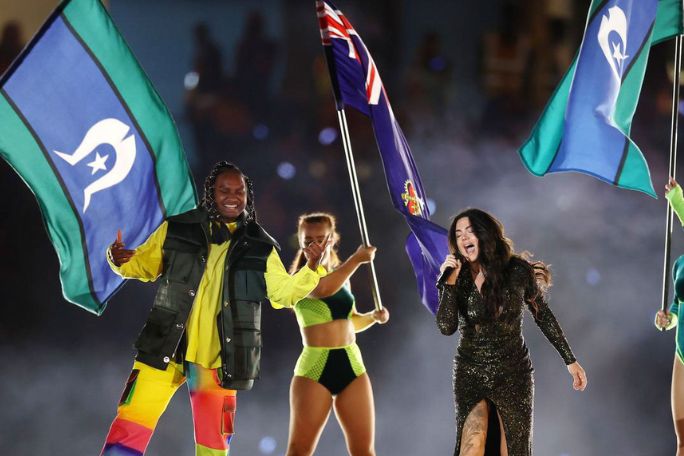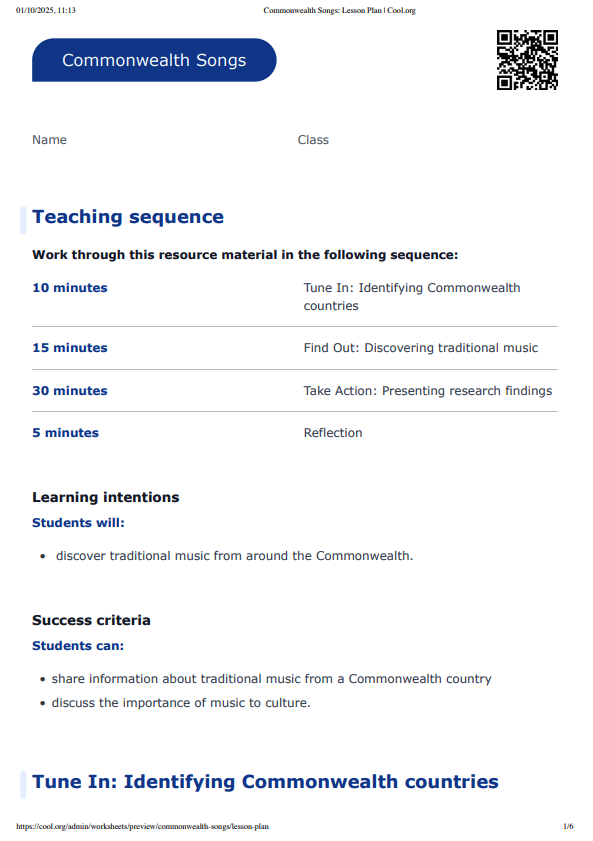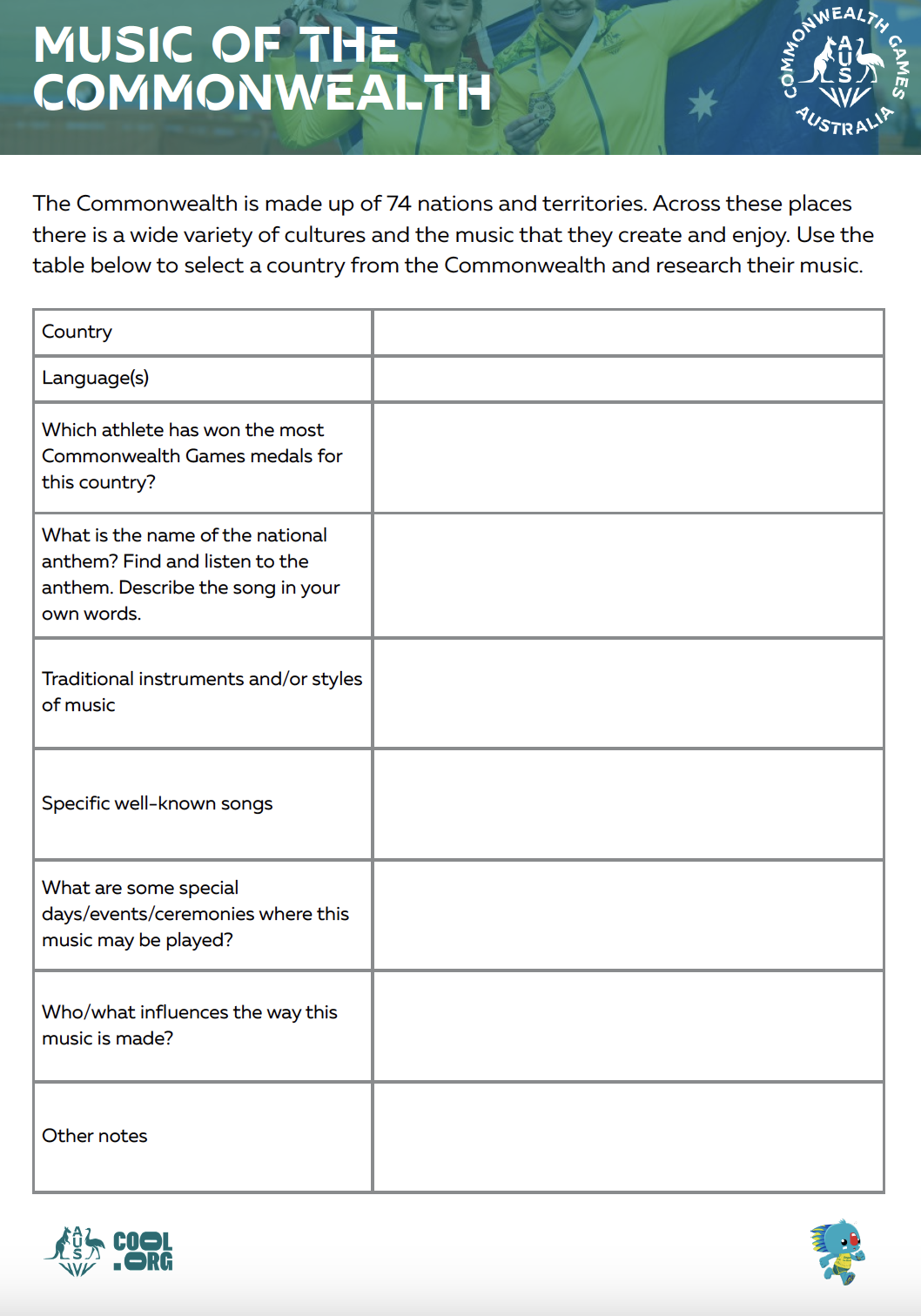Lesson summary
Students will explore where, why and how music is composed and performed across cultures by researching the traditional music of a Commonwealth country. They will investigate aspects such as style, instruments, influences and where the music is commonly featured. They will present their findings in a digital presentation and share it with their peers to gain feedback and develop their knowledge of world music.
Learning intentions
Students will:
- discover traditional music from Commonwealth countries.
Success criteria
Students can:
- share information about traditional music from a Commonwealth country
- discuss the importance of music to culture.
Lesson guides and printables
Curriculum links
Select your curriculum from the options below.
Lesson details
Skills
This lesson is designed to build students’ competencies in the following skills:
- creative thinking
- critical thinking
- collaboration
- communication
- cultural understanding
- digital literacy
- intercultural understanding
Curriculum Mapping
Australian Curriculum (v9.0) content description:
Year 3 and 4 Music
- Students learn to explore where, why and how music is composed and/or performed across cultures, times, places and/or other contexts (AC9AMU4E01).
- Students learn to explore how First Nations Australians use music to communicate their connection to and responsibility for Country/Place. (AC9AMU4E02).
Relevant parts of Year 3 and 4 Music achievement standards: Students describe where, why and/or how music is composed and/or performed across cultures, times, places and/or other contexts.
General capabilities: Critical and Creative Thinking, Digital Literacy, Intercultural Understanding, Literacy
Cross-curriculum priority: Aboriginal and Torres Strait Islander Histories and Cultures.
Level of teacher scaffolding: Low – the teacher will need to confidently facilitate class discussions and group work.
UN Sustainable Development Goals
- Target 4.7: By 2030, ensure that all learners acquire the knowledge and skills needed to promote sustainable development, including, among others, through education for sustainable development and sustainable lifestyles, human rights, gender equality, promotion of a culture of peace and non-violence, global citizenship and appreciation of cultural diversity and of culture’s contribution to sustainable development.
Resources Required
- access to software for students to create a digital presentation, e.g. Google Slides, PowerPoint, Canva
- device to display website
- devices for students to conduct online research and create a digital presentation
- Student Worksheet
Additional Info
These resources have been created with the support of the Australian Commonwealth Games Team, via Commonwealth Games Australia.
The Australian Commonwealth Games Team are set to take on the athletes of he world at the Glasgow 2026 Commonwealth Games from next year, and together the more than 250 athletes in green and gold aim to be the top nation at the Games in terms of gold and overall medals won, the number of medallists, and the number of sports winning medals.
You can cheer on Australia’s best across the screens of 7 and 7Plus from 23 July 2026.
Related Professional Learning
Building a Positive Classroom Culture With Our Students
Quick summary: This course will explore strategies for building a positive classroom culture with your students, regardless of their age, year level, or frequency of teaching.



Welcome back!
Don't have an account yet?
Log in with:
Create your free Cool.org account.
Many of our resources are free, with an option to upgrade to Cool+ for premium content.
Already have an account?
Sign up with:
By signing up you accept Cool.org's Terms and Conditions(Opens in new tab) and Privacy Policy(Opens in new tab).